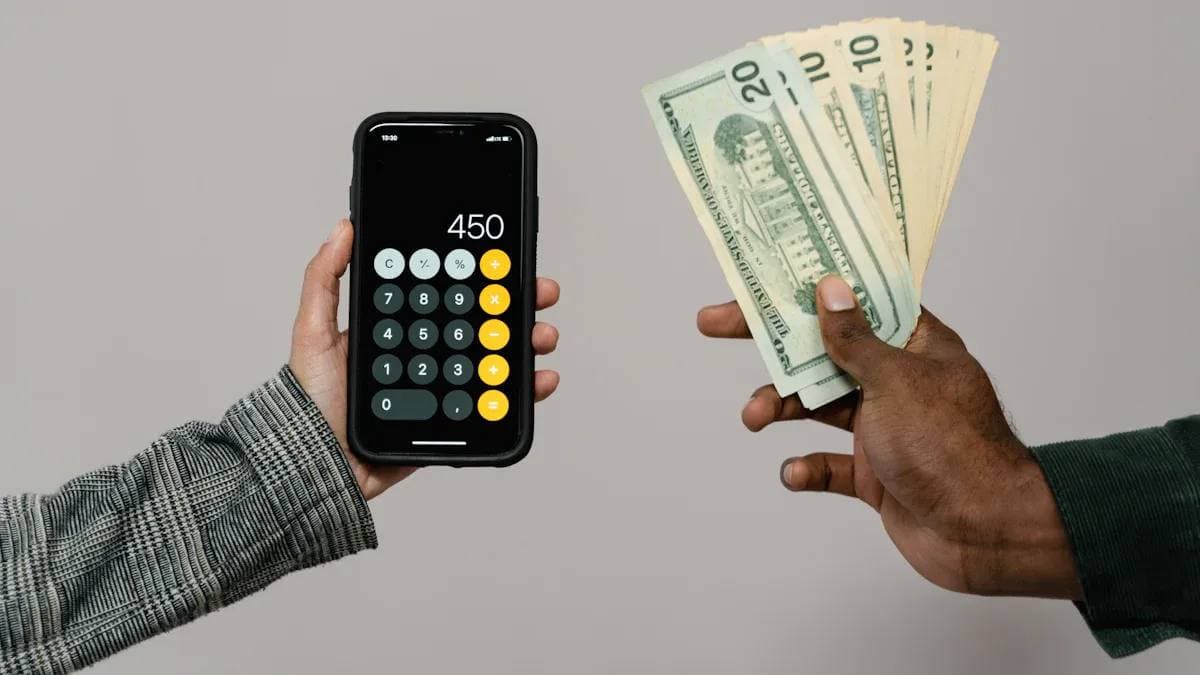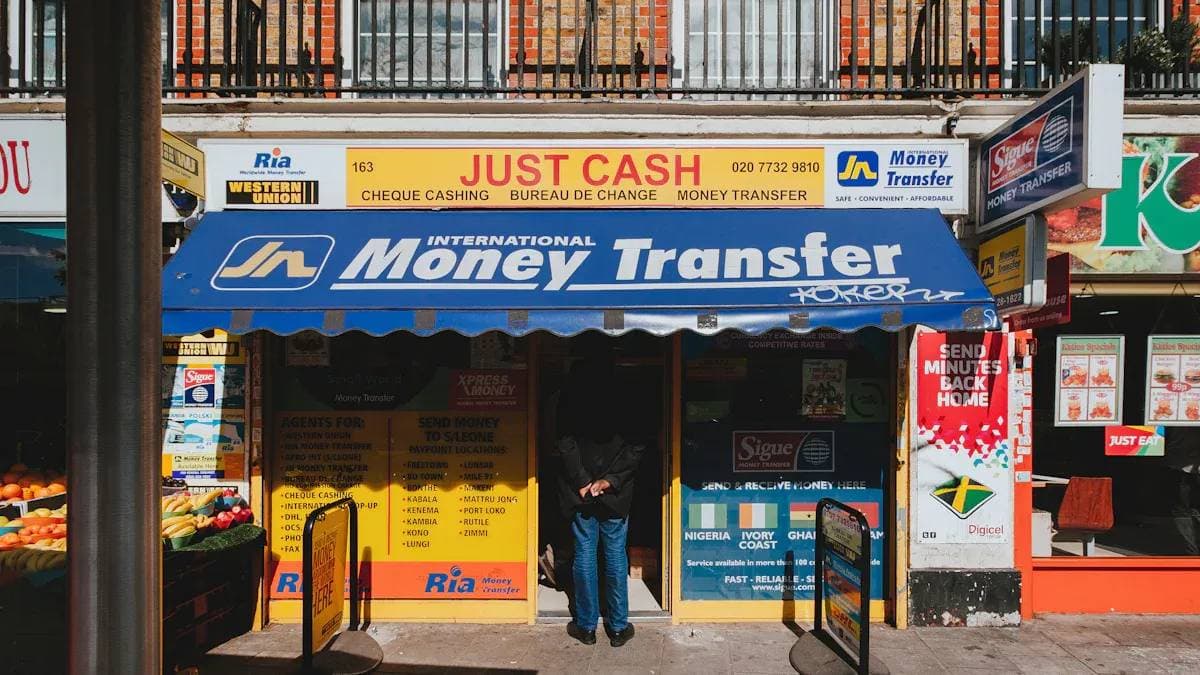- EasyCard
- Trade
- Help
- Announcement
- Academy
- SWIFT Code
- Iban Number
- Referral
- Customer Service
- Blog
- Creator
In - depth Reveal: The Complete Process, Fee Details and Key Precautions of Apple Cash International Remittance
Apple Cash is a digital payment service launched by Apple Inc., mainly used for peer-to-peer payments, shopping payments, and bank withdrawals within the United States. However, many users hope to use Apple Pay for international remittances to transfer funds between different countries. Nevertheless, the feasibility, fees, and arrival times of international transactions may vary depending on the country, bank policies, and payment methods. In addition, BiyaPay also offers a more flexible local remittance method, supporting most regions, ensuring the safe and rapid arrival of funds, and reducing additional fees for international transactions.

Can Apple Cash be used internationally?
Apple Cash is currently only available to users in the United States and can only be used for peer-to-peer (P2P) payments, shopping, and withdrawals within the United States. But if users want to use Apple Pay for international remittances, they can complete cross-border payments by binding a credit card or debit card. However, when using Apple Pay in different countries, the following points need to be noted:
- The payee doesn’t need to have Apple Pay: If the payee’s country doesn’t support Apple Pay, they can still receive funds through third-party payment platforms (such as Venmo or PayPal). As long as the payee has a compatible bank account bound, international remittances can be made through Apple Pay.
- Transaction restrictions in different countries: Some countries may have restrictions on Apple Pay transactions. For example, they may not allow Apple Pay for international remittances or require additional bank reviews.
- Banks may charge additional fees: Apple Pay itself doesn’t charge international remittance fees, but the issuing bank may charge currency conversion fees, cross-border payment fees, or other additional fees.
To ensure that Apple Pay can be used smoothly for international remittances, users should first confirm whether the payee’s country supports Apple Pay and understand the bank’s charging standards. In addition, they can also consider using PayPal, Wise (formerly TransferWise), or other international payment platforms to obtain more competitive exchange rates and lower handling fees.
How long does it take for an international remittance through Apple Pay?
The arrival time of an international remittance depends on several factors, including the remittance country, the bank’s processing speed, the accuracy of the information provided, and the stability of the network connection. Generally speaking, the international remittance time of Apple Pay is as follows:
- Transactions with a credit card or debit card bound to Apple Pay can usually be received instantly, but some banks may need 1-2 working days to process the payment.
- International transfers through a bank account may take 3-5 working days to complete, and the specific arrival time depends on the payee’s bank.
- Bank processing time: Some international banks may require additional identity verification or transaction reviews, which may cause a delay in the arrival of funds.
To ensure the rapid arrival of funds, users should check the payee’s information before the transfer and choose a bank card that supports Apple Pay to reduce the transaction time. It is recommended to use the instant arrival service and try to avoid transaction delays caused by bank processing times.
How to cancel or revoke an international remittance made through Apple Pay?
Once an international remittance is completed, whether it can be revoked depends on the payment method and the receiving channel. Generally:
- Transactions made through bank transfers or telegraphic transfers usually cannot be cancelled. Once the funds arrive, users need to contact the payee or the bank to seek a refund.
- If the transaction is still being processed, some banks allow users to revoke it before the transaction is completed, but they need to contact customer service as soon as possible.
- Remittances made through third-party platforms such as PayPal and Venmo may allow cancellation before the transaction is completed, and the specific policy depends on the transaction status and payment method.
- Apple Pay transactions themselves are irreversible, but if the payment is rejected by the bank or the funds are not settled, users can contact customer service to apply for revocation.
If users find that they have entered incorrect information or made a wrong transfer, it is recommended to contact the bank or Apple Pay customer service immediately to take remedial measures before the transaction is completed. For important international remittances, it is recommended to conduct a small test transfer first to ensure that the transaction is correct.
How is the exchange rate calculated for international remittances through Apple Pay?
Apple Pay itself does not provide a foreign exchange service, and the exchange rate for international payments is determined by the issuing bank. Therefore, when using Apple Pay for international remittances, the following problems may be encountered:
- Additional currency conversion fees: Some banks charge a currency conversion fee of 1%-3% for foreign currency transactions.
- The exchange rate may not be competitive: The exchange rate provided by the bank may be lower than the real-time market exchange rate, which may cause users to pay a higher conversion cost.
- Different fees for different payment methods: Using a credit card, debit card, or bank account for international remittances may involve different fees and exchange rates. It is recommended that users check the specific fees in advance.
To obtain a more competitive exchange rate, users can compare different international payment services, such as Wise, PayPal, or BiyaPay. These platforms usually offer more transparent exchange rates and lower international transfer fees.
Which countries does Apple Pay support for international remittances?
Apple Pay is currently available in more than 40 countries and regions, but not all countries allow the use of Apple Cash for international remittances. In some countries, due to policy or security issues, international transactions of Apple Pay may be restricted. For example:
- Countries such as the United States, the United Kingdom, Canada, and Australia support Apple Pay, but different banks may have different international payment policies.
- Although some countries (such as China and India) support Apple Pay, they may not allow Apple Pay for international remittances, or require users to use the local payment system for transactions.
- Some banks may set additional reviews for Apple Pay international transactions, which may lead to transaction failures or delayed fund arrivals.
Therefore, before making an international remittance, users should check the relevant regulations of the payee’s country to ensure the smooth progress of the transaction. It is recommended to confirm the relevant terms of Apple Pay international payments with the bank before the transfer to avoid transaction failures or additional fees.
Conclusion
Apple Pay can be used for international payments, but it is limited by bank policies and regional regulations. When using it, users need to consider the arrival time of funds, the exchange rate, and potential additional fees. To ensure the smooth progress of remittances, users can take the following measures:
- Ensure that the payee’s country supports Apple Pay, or that the payee can use platforms such as PayPal and Venmo to receive funds.
- Check all payee information before the transaction to avoid transaction failures due to errors.
- Compare different international payment services and choose the option with the lowest fees and the fastest arrival time.
BiyaPay adopts the “local remittance” method and supports transfers in most regions around the world. Compared with Apple Pay, it provides faster arrival speed and lower cost, making international remittances easier and more convenient.
*This article is provided for general information purposes and does not constitute legal, tax or other professional advice from BiyaPay or its subsidiaries and its affiliates, and it is not intended as a substitute for obtaining advice from a financial advisor or any other professional.
We make no representations, warranties or warranties, express or implied, as to the accuracy, completeness or timeliness of the contents of this publication.




Contact Us
Company and Team
BiyaPay Products
Customer Services
is a broker-dealer registered with the U.S. Securities and Exchange Commission (SEC) (No.: 802-127417), member of the Financial Industry Regulatory Authority (FINRA) (CRD: 325027), member of the Securities Investor Protection Corporation (SIPC), and regulated by FINRA and SEC.
registered with the US Financial Crimes Enforcement Network (FinCEN), as a Money Services Business (MSB), registration number: 31000218637349, and regulated by FinCEN.
registered as Financial Service Provider (FSP number: FSP1007221) in New Zealand, and is a member of the Financial Dispute Resolution Scheme, a New Zealand independent dispute resolution service provider.




















